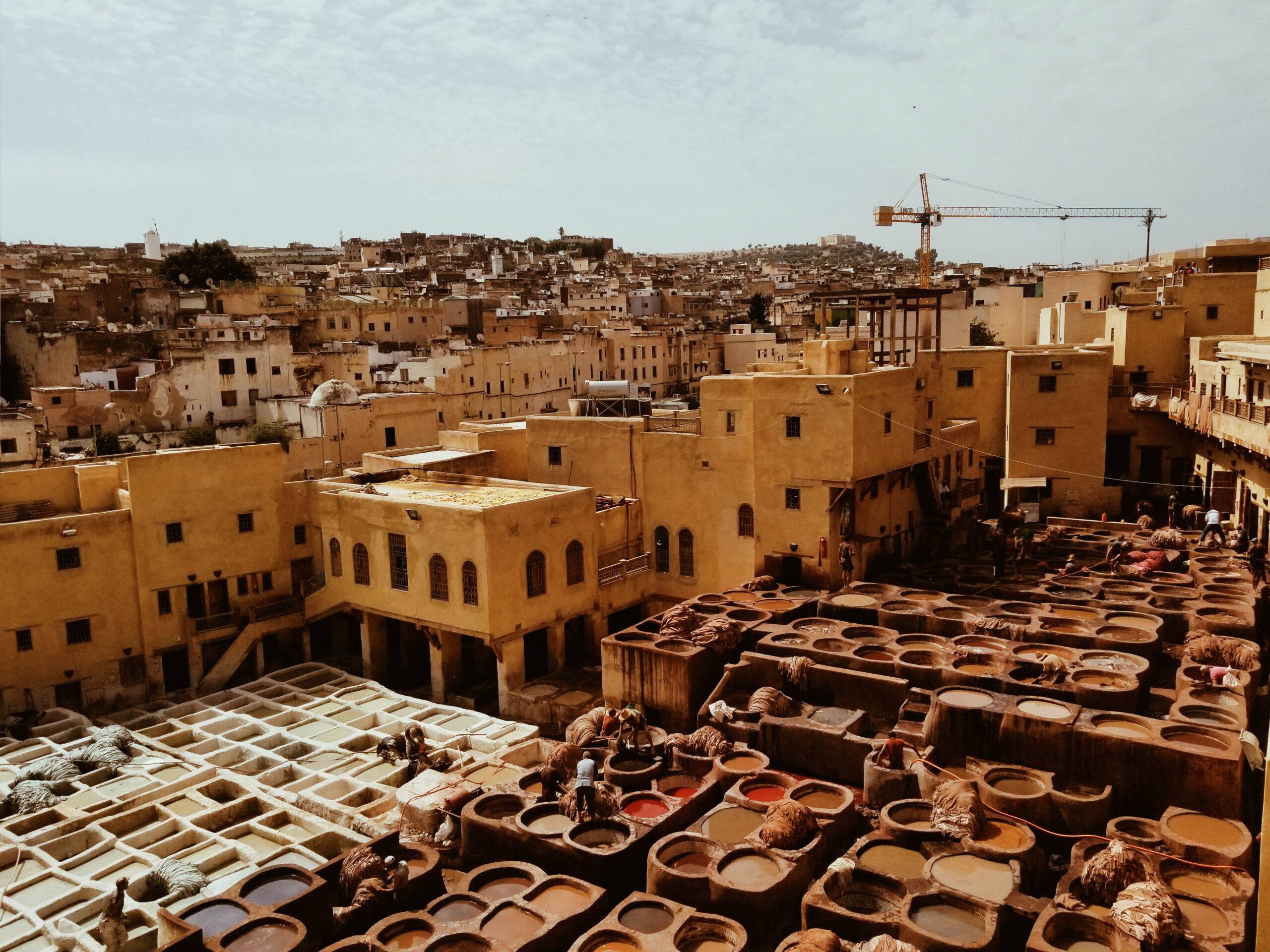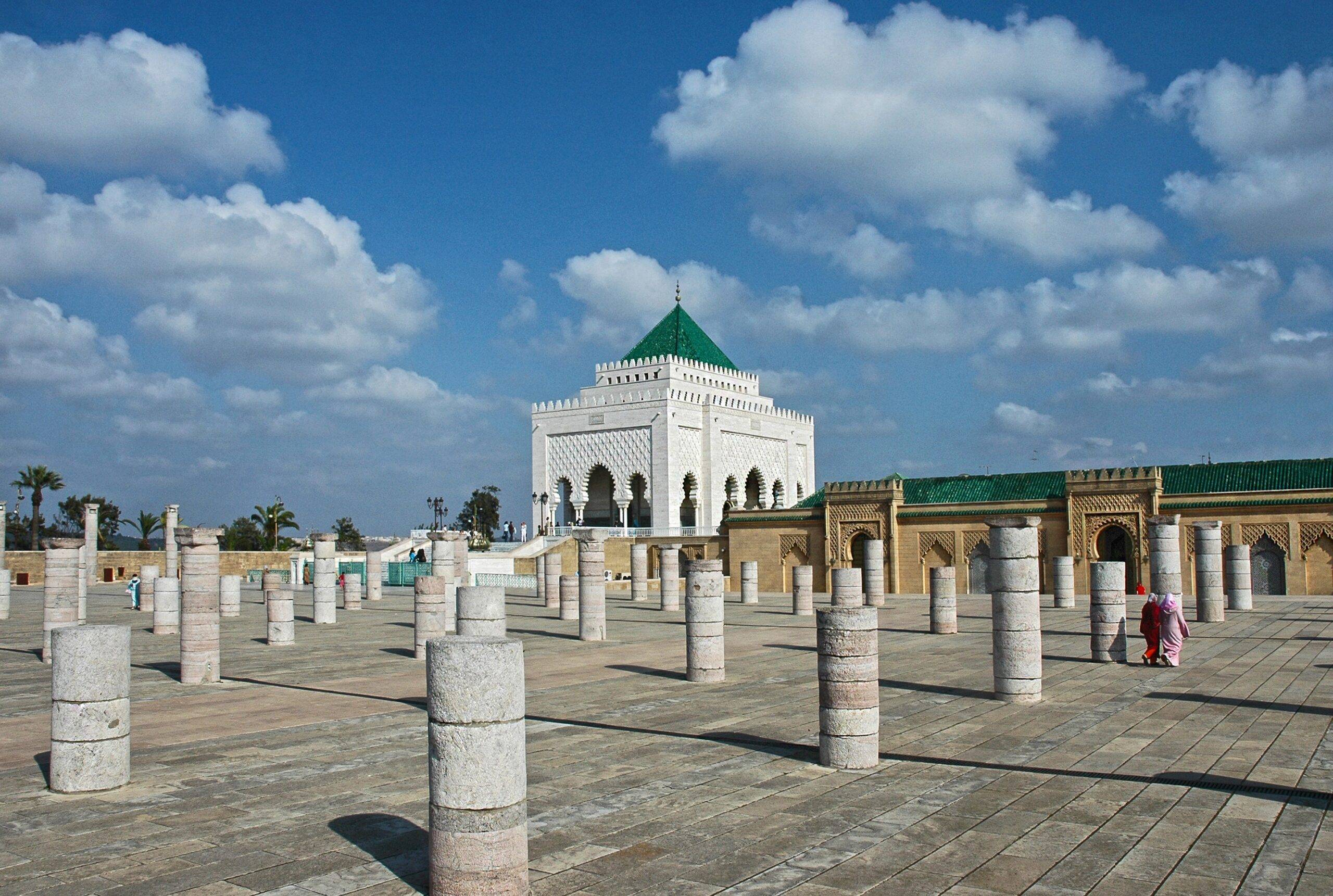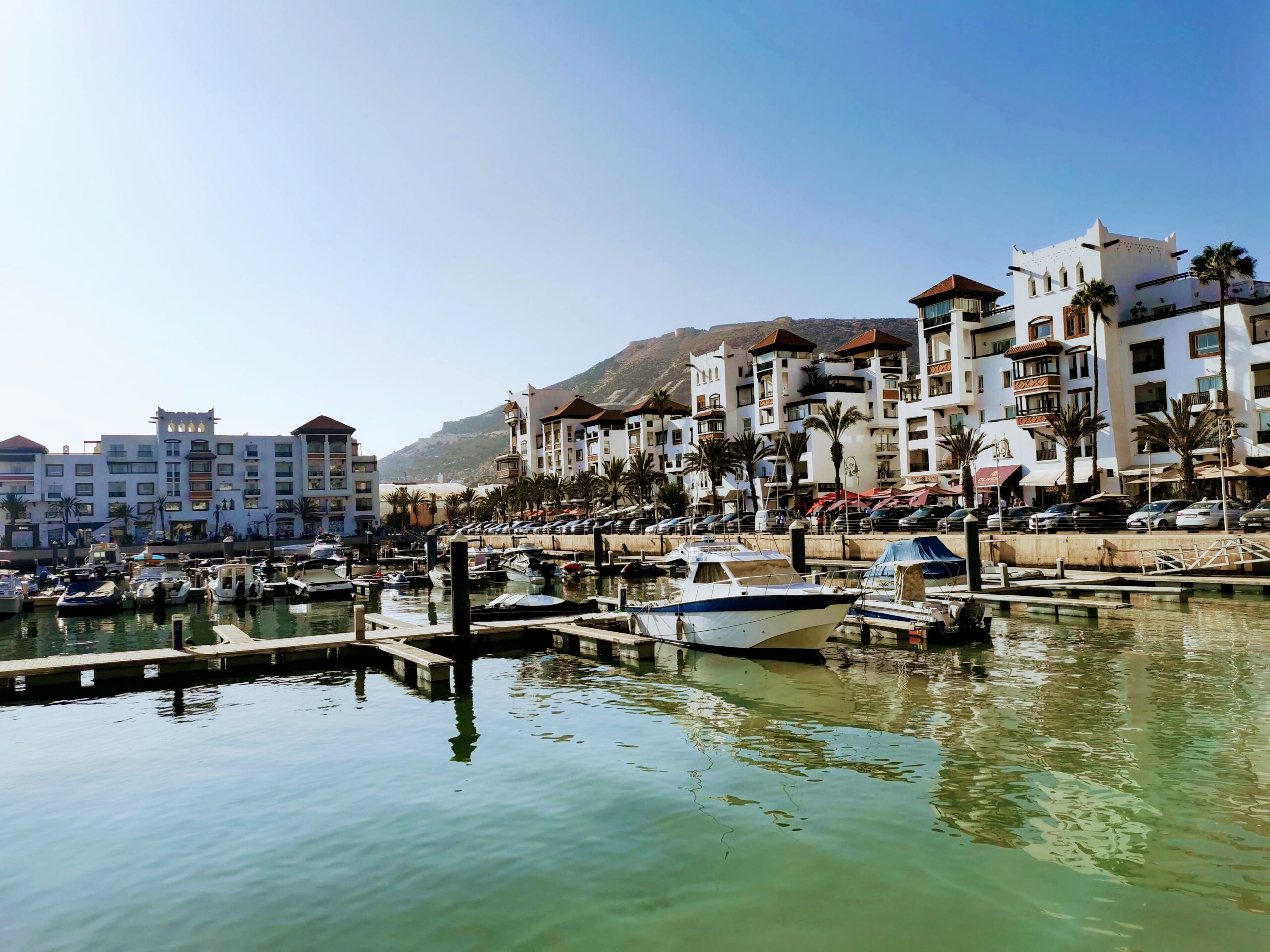
City Destinitions
Start a journey through Morocco with our guidance promises a captivating exploration of the country’s visually stunning cities, each revealing a tapestry of intriguing culture. Morocco’s urban centers boast enchanting medinas, ancient walled Arabic areas, and historic old towns that beckon with their magical allure. Among these, the Imperial Cities — Marrakech, Fes, Meknes, and the present capital, Rabat — stand as the four historical capitals, each holding a unique charm. Immerse yourself in the atmospheric walled cities, where ancient architecture and historical treasures abound. Whether you choose to focus your Morocco Tour on these iconic cities or weave in a variety of destinations, we are dedicated to collaborating with you to tailor the perfect itinerary for your journey.

Visit Casablanca
This expansive metropolis, the Maghreb’s largest, isn’t typically a prolonged stay for most tourists. While lacking the exotic allure of some of Morocco’s other cities, it holds immense significance and is undeniably geared towards the future.
With a contemporary skyline dominated by towering structures and encircled by a motorway, it defies preconceived notions based on cinematic portrayals. Despite its modernity, the city grapples with challenges stemming from its own success. The swift urban expansion attracts rural dwellers seeking better opportunities, yet many find themselves confined to sprawling shanty towns.
Casablanca stands as a linchpin in the national economy, boasting a pivotal port and serving as the financial, industrial, commercial, and manufacturing hub of the kingdom. In North Africa, only Cairo rivals its vitality, but Casablanca appears more attuned to and accommodating of Western influences.
The Hassan II Mosque, a true gem of Casablanca, ranks among the world’s largest. Its construction metrics are staggering, and as one of the few Moroccan religious edifices open to non-Muslims, it is a must-see. The minaret, second only to Mecca’s, gleams with sunlight on its marble and glazed tile façade, crowned by three gilded balls. Intricate steel and titanium doors guard the opulent interiors, illuminated by Venetian chandeliers. Strategically positioned on the natural shoreline, this mosque, described in a Koranic verse as ‘the throne of God built on water,’ is not just impressive; it demands witnessing to be believed.
Despite being easily navigable, Casablanca often gets overlooked by travelers. While it may not be the focal point of a vacation, spending a half-day here is worthwhile. Explore the grand Mosque of Hassan II and wander the streets of the New Town, where Boulevard Mohamed V showcases Neoclassic residential blocks, evoking the fashionable Art Deco era.
Casablanca emerges as Morocco’s most forward-looking city, making it an ideal stop for those keen on experiencing modern Moroccan nightlife.

Visit Rabat
Nestled between modernity and historical richness, Rabat stands as the fourth imperial city of the Kingdom of Morocco, often overshadowed by its more renowned counterparts. Serving as the nation’s capital, administrative hub, and financial center, Rabat’s dual identity unfolds through its contemporary urban landscape, the epitome of Africa’s ambitious development.
The city boasts a distinctive architectural style, mirroring the innovation embedded in its city planning. While exuding a palpable European ambiance with a modern tram system and revamped marina, Rabat unveils its historical layers as you ascend the hill. The remnants of the old Roman city and medieval tombs linger, a testament to the city’s enduring past.
Wandering through Rabat’s streets becomes a journey through time, revealing its diverse cultural influences. From its Amazigh roots and Phoenician-Roman legacy to Islamic conquests and Spanish-Jewish-French colonial periods, each era imprints itself on the city’s architecture. The maritime allure of Rabat’s Pirate Republic years can be imagined while gazing at the Atlantic coast from the Oudaïas Kasbah.
Delving into the city’s history, the medina emerges as a testament to the meticulous planning of Muslims expelled from Spain. Unlike the labyrinthine streets of Marrakech or Fes, Rabat’s medina unfolds with an organized layout, inviting exploration without the fear of getting lost.
In its 19th-century French iteration, Rabat’s new area boasts expansive avenues adorned with palm trees, gardens, and charming eateries. A quintessential national pastime unfolds here – people-watching while sipping on refreshing orange juice or nuss-nuss (half coffee-half milk).
Contrary to the bustling souks of Marrakech, Rabat’s markets offer a gentler, more immersive experience. This city, a hidden gem, thrives in its silence, inviting exploration and appreciation for its nuanced charm. Amidst the myriad stories Rabat has to tell, it remains a city that whispers its allure, captivating those who take the time to listen.

Visit Meknes
Transporting you back to the 17th century, Meknes, the ancient imperial city of Morocco, is often hailed as the Versailles of the region. Imbued with the architectural marvels of Spanish-Moorish influence, this city boasts fortified walls and gates, masterfully crafted under the rule of the formidable Moulay Ismail, encapsulating a rich tapestry of folklore and culture.
Ranked as the fifth largest city in Morocco, Meknes is strategically positioned at the heart of a flourishing agricultural region, fostering a dynamic economy rooted in the cultivation of olives, wine, and the ubiquitous Moroccan mint tea. In stark contrast to the foreign and Arab origins of Fès, Meknes stands as a testament to Berber farmers’ dedication and prosperity. Embellished with captivating gates, imposing ramparts, majestic mosques, and opulent palaces, Meknes exudes a unique charm, complemented by the picturesque surrounding countryside.
Initially not destined to be an ‘imperial city,’ Meknes assumed this role as a result of the lukewarm reception from the inhabitants of Fès and Marrakech towards Moulay Ismail’s rule. Historical significance emanates from Meknes, adorned with grand Moorish architecture, and in its proximity lies Morocco’s paramount archaeological site – the partially excavated Roman city of Volubilis. Originating as a Phoenician settlement in the 3rd century, Volubilis has secured its place as a UNESCO World Heritage Site due to its remarkably preserved status as a large Roman colonial town.
Meknes is comprised of well-defined quarters – the medina, the imperial city, and the ville nouvelle. Key historical landmarks include the Grand Mosque, Bou Inania Medersa, Bab Mansour el-Aleuj, place el-Hedime, The Mausoleum of Moulay Ismail, and The Koubba el-Khayatine. Not to be overlooked are the vibrant souks and Kessaria, the latter being a unique market structure akin to a souk mall.
Delving into the mystic facets of the region, Morocco seamlessly weaves together the Islamic faith of law-makers and learned men with popular forms of religion. Here, the cult of saints and the influence of brotherhoods take center stage, particularly in the spiritualist rites performed by craftsmen and traders. This spiritual branch of Islam, known as Sufism, echoes the practices of Eastern mystics and has transcended Morocco’s borders.
One notable example is the Aissaoua brotherhood, represented by the mausoleum of Sidi Mohamed ben Aïssa in Meknes. Thus, Meknes not only stands as a city entrenched in fortified history but also opens a gateway to the spiritual and mystical dimensions that enrich the cultural mosaic of Morocco.

Visit Marrakech
Marrakech, a name evoking the “Land of God,” stands as a globally renowned city, celebrated for its vibrant souks, lively square, and distinctive pinky-red buildings. Nestled against the majestic backdrop of the High Atlas Mountain range, Marrakesh is a city that harmoniously blends bohemian flair, cultural richness, traditional charm, enchantment, and romance.
The beating heart of Marrakech is the main square, Jma el Fnaa, a bustling hub where exotic goods, snake charmers, and musicians create a sensory tapestry of vivid colors and captivating scents. A departure from the monotony of gray skies, Marrakech beckons with its rose-tinted allure, where beauty lies in the intricacies. Take respite from the energetic streets in one of the city’s beautiful gardens or opt for the tranquility of a riad, offering a rooftop garden oasis.
Wandering through the medina transports you back to the Middle Ages, with the central area around the Ben Youssef Mosque housing a remarkable collection of museums, madrassas, and historic landmarks. From art and cultural artifacts to rare video footage and the fragrances of Morocco, this area is a treasure trove of the city’s rich history. The Almoravid Koubba, Marrakech’s oldest building, showcases exceptional architectural decoration, contributing to the city’s spiritual reputation as the ‘city of the 7 men/saints’ and their brotherhoods around the medina.
Marrakech’s historical tapestry includes iconic landmarks such as the Koutobia Mosque, the UNESCO world heritage site Place Jemaa el-Fna, Madersa Ben Youssef, Palais Bahia, Palais Badii, Saadian Tombs, and Majorelle and Menara Gardens. Beyond these, the city boasts numerous gates and vibrant marketplaces, like the Moukef, Polishers Street, Souika, and Souk Leghzel.
Embracing a year-round appeal, Marrakech serves as an excellent starting point for day trips or longer excursions, offering a captivating blend of tradition and modernity. For an authentic experience of the “Real Morocco,” consider incorporating a guided tour or desert excursion.
Delving into Marrakech’s history reveals a continuous occupation since Neolithic times. The Almoravids marked a turning point, transforming the city into a thriving market for nomadic tribes and Tensift Valley farmers. Innovative water supply systems, including underground pipes from the High Atlas, characterized their era. Subsequent rulers like the Almohads left monumental structures like the Koutoubia Mosque and Bab Agnaou, while the city experienced decline before its resurgence as the ‘Golden Capital’ under the Saadians.
Civil wars in the 18th century inflicted lasting damage, compounded by alternating rule between Fès and Marrakech. The French intervention in the 20th century brought improvements but was marred by the interests of colonial farmers and corrupt allies. Post-independence in 1956, Marrakech emerged as a vital administrative center, thriving as a tourist destination.
Intriguing and bustling, Marrakech captivates as a haven for people-watchers amid its intoxicating and chaotic charm.

Visit Fez
Fes stands as the world’s oldest and fully preserved Islamic city, holding the prestigious designation of another UNESCO World Heritage site. Its ancient medina, originally constructed in the 9th century, is a labyrinth of narrow, winding alleys so intricate that they can confound even a donkey’s navigation. Within the medina’s walls, a population of 100,000 resides, with many inhabitants having never ventured beyond its confines.
Once a hub of culture and knowledge, Fes hosted the world’s oldest university. The city’s historical significance extends to its leather tannery, dating back nine centuries and borne out of the demand for book leather. Standing on a balcony overlooking this site, with a sprig of herbs to combat the potent odors, unveils a unique spectacle. Stone vessels hold an array of natural dyes, transforming animal hides into exceptionally high-quality leather products.
Fes has woven a tapestry of Morocco’s political, commercial, intellectual, and spiritual life for a millennium. The Karaouiyine Mosque, housed within its walls, supplied knowledge to the country’s intellectual elite and foreign scholars.
Historical roots trace back to the 9th century, when Fes emerged as the capital of the Idrissid state, the first Muslim Kingdom of Morocco. Despite the decline of the Idrissid Dynasty a century later, the city endured. Legend has it that Idriss and his regent Rachid envisioned a specifically Muslim city during their travels. Resting at the Ras el Ma spring, they discovered green hills and a valley, leading to the foundation of Fes. The city’s name, Fès, and its citizens, Fassi, were inspired by the discovery of a golden axe, or fas, during excavation, tying into a tale of human sacrifice.
Fès is comprised of three parts: Fès el Bali (old Fès), Fès Jdid (New Fès), and the French New Town, collectively housing over a million people. The medina boasts historic landmarks such as the Merinids Tombs, Foundouk el Nejjarine, Zaouia of Moulay Idriss II, Andalusian Mosque, Karaouine Mosque, and three Medersas, including the stunning Bou Inania. Noteworthy quarters like the Tanners Quarter of Chouara, the Andalusian Quarter, and the intricate souks in old Fès add to the city’s allure.
While Fes may not easily reveal its depths, exploring its streets, squares, and historic quarters provides a captivating experience. The city, suspended in time, serves as Morocco’s spiritual center, embracing its rich history with or without the presence of tourists. A guided visit by an official guide is recommended to fully comprehend the intricate layers of this ancient city.

Visit Tangier
Once a beacon of international allure, Tangier stands as a city with a distinct character that distinguishes it from its Moroccan counterparts. Its magnetic charm has lured a parade of artists, musicians, and writers throughout history, counting luminaries like Henri Matisse, Claudio Bravo, Delacroix, Paul Bowles, The Beatles, and The Rolling Stones among its admirers. The allure of Tangier, especially in the early 20th century, captivated the writers of the Beat Generation, who were not only enticed by the favorable climate but also inspired by the city’s spiritual well-being, liberating atmosphere, and adventurous spirit.
Situated at the northern pinnacle of Morocco, Tangier owes its unique identity to its strategic location. The city’s port, a vital link between Africa and Europe, has played a pivotal role in shaping its history, with the sea and the strategic position in the Straits of Gibraltar leaving an indelible mark.
While the historic heart of Tangier resides in its medina, the true essence of the city is embodied in the Kasbah, a labyrinth of narrow streets, gateways, and a picturesque seafront promenade. The famed ‘Café Hafa’ from the 1920s offers a panoramic view that encapsulates the energy of young Moroccan men and fishermen gazing wistfully at a distant, hazy Spain. Tangier’s streets still echo with a sense of nostalgia, preserving the artistic and literary memories of yesteryears. The Tangier immortalized in tales of political exiles, clandestine dealings, and intrigue, as portrayed in movies and literature, has evolved, leaving behind echoes of its past.
Holding the distinction of being the oldest continually inhabited city in Morocco, Tangier has witnessed the rise and fall of civilizations—from Carthaginians, Greeks, Phoenicians, Romans, Vandals, Visigoths to the Umayyad empire, before integrating into modern Morocco.
Key attractions in Tangier include the Grand Socco and its vibrant souks, a circular area just beyond the medina but still considered part of the old town, the Mendoubia, Petit Socco, and the Kasbah, which houses the Grand Mosque built by Moulay Ismaïl atop the ruins of a Portuguese cathedral, itself constructed over a Roman temple. Daily excursions to the lighthouse of Cap Sparte, the Caves of Hercules, and the Roman site of Cotta offer further glimpses into Tangier’s rich tapestry.
In essence, Tangier stands as the Gateway to Africa, a city that continues to weave its unique narrative through the interplay of history, culture, and its timeless allure.

Visit Agadir
In Morocco’s western embrace, kissed by the Atlantic waves, Agadir emerges as a radiant jewel. Regardless of the season, the sun generously bathes the city in its rays, and a delightful climate, tenderly tempered by trade winds, graces its presence. The pièce de résistance, a 10-kilometer seafront, unveils captivating vistas of the azure ocean, providing tourists with the perfect setting to unwind.
As the primary coastal resort of the nation, Agadir, boasting an impressive 300 days of sunshine annually, is a hive of activity. Along the waterfront, inviting cafes and restaurants beckon, inviting you to savor local gastronomy and subjecting their specialties to the discerning palates of visitors.
Venturing deeper into the city, the El Had souk unfurls its charm through labyrinthine streets, where over 6,000 shops tantalize your curiosity. Wandering through this bustling market, animated by the spirited negotiations of merchants, is a captivating experience. A city that never sleeps, Agadir annually hosts the Timitar festival, a celebration of world music with a specific focus on Amazigh tunes.
With an open-hearted embrace to the ocean and the world, Agadir is a dynamic city where relaxation finds its sweet spot.

Company Info
Address : Fez, Morocco
Phone : 00212697540383
Email : contact@moroccotoursitinerary.com


